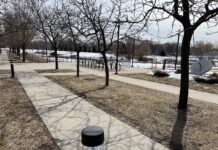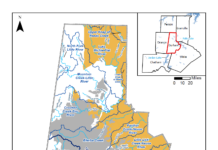Adverse weather costs contractors a considerable amount of money each year in the form of project delays. Globally, 45% of building projects are affected by adverse weather, leading to billions of dollars in losses.1 The most common cause of these losses is schedule overruns that are often attributable to three increasingly common weather events: extreme temperatures, high winds and precipitation.
Although a common occurrence, rain is one of the most significant contributors to project delays, specifically to projects in their early stages. The resulting mud from rain in the early stages of construction can make it increasingly difficult for workers to maneuver equipment and carry out project tasks efficiently and safely. For example, concrete used in these projects cannot be poured on wet soil, and some heavy machinery is unusable in deep mud. Therefore, progress will typically halt immediately following rain, delaying the project.
While there are existing solutions to mitigate this issue, such as sump pumps to remove standing water and plastic sheeting to protect exposed dirt, these solutions are time-consuming and not completely effective. Sump pumps can remove standing water, but once it has soaked into the ground to create mud, contractors must wait for the ground to dry. Wind can displace plastic sheeting, or water can flow past the sheeting. Currently, the most common strategy is to wait for the ground to dry naturally before progress can resume, and if the sun is not shining this could mean extended downtime that adds cost to the project.
An innovative approach that stops the disruptive effects of rain on building projects is the RainWater Absorbing System (RAS). The system absorbs rainwater before it can reach the ground, which stops the rainwater from turning exposed dirt into mud (Figure 1). This preventative approach reduces the likelihood of construction delays.
Because the RAS can be reused dozens of time, it creates a more sustainable solution over plastic sheeting by reducing the amount of waste from disposal of plastic sent to the landfill. Tests were conducted to determine how many times the product can be reused without a decline in performance. Water was sprayed on a RAS bag filled with polymer granules at a rate of 473.2 ml of water over a six minute period — spray two minutes, wait two minutes, then spray again. A portable heater with a hose was used to dry the granules in a one-hour period of time, then the process was repeated. The test was stopped after 24 cycles because there was no drop in absorption capabilities.
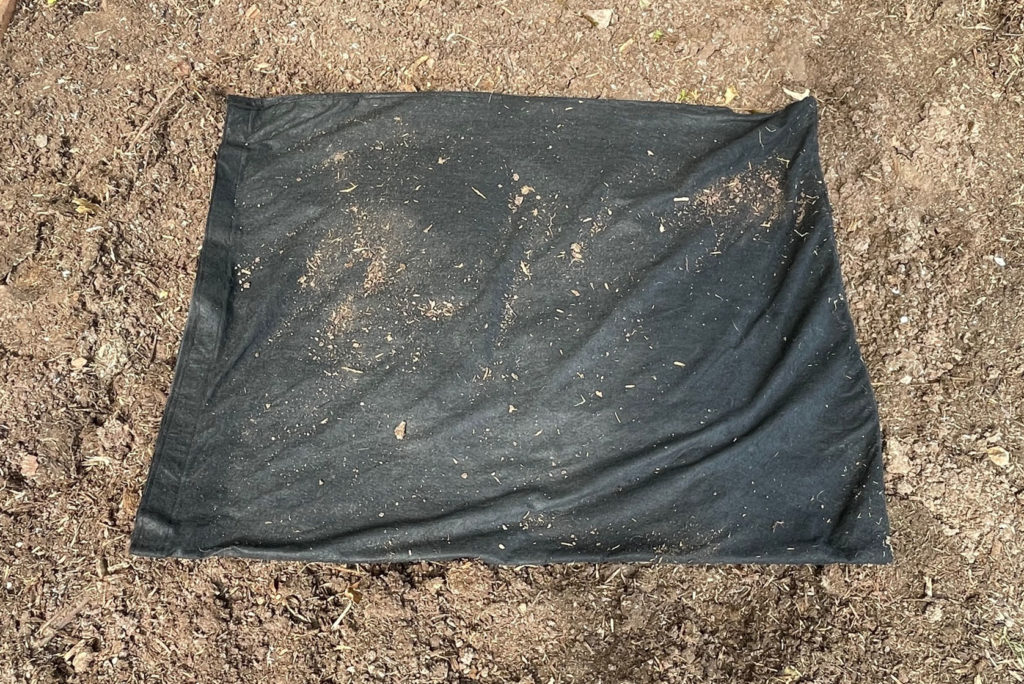
At a cost of about $20 per bag, contractors see this system as an investment similar to scaffolding, hand tools or manufactured, reusable concrete forms. These tools and products provide a service at an initial higher cost to other, less effective or disposable options but have a much longer life cycle, thereby reducing project costs and waste. When dry, the RAS bags can be folded to a 12-inch by 12-inch by 5-inch (30 cm by 30 cm by 12 cm) size, so that dozens can easily be stored in a truck or car and pulled out as needed.
The patent pending technology uses an application bag made from a porous geotextile material that is commonly used for erosion control products on top and a waterproof material on the bottom. It contains polymer granules capable of absorbing 300 to 400 times their weight in water. The granules are the same water-absorbing polymers used in consumer products such as disposable diapers, but unlike those products that are used once, then go to a landfill, the RAS can be reused, making it more environmentally conscious.
The bag is designed to mitigate any issue of mud on the fabric affecting performance. The bottom of the bag is a waterproof material to trap the water inside until absorbed by the granules so mud does not affect its performance. The top of the bag faces up and has no contact with the mud.
Using the RAS is very simple. Before applying on the ground the RAS bags should be shaken a little to evenly distribute the SAP granules, however, they do not need to be perfectly spread out because of the waterproof bottom. The RAS bags should cover approximately 95% of the ground that needs to be protected, but 100% is not necessary since a little rainwater that makes it past will not have much effect on the dirt and the area.
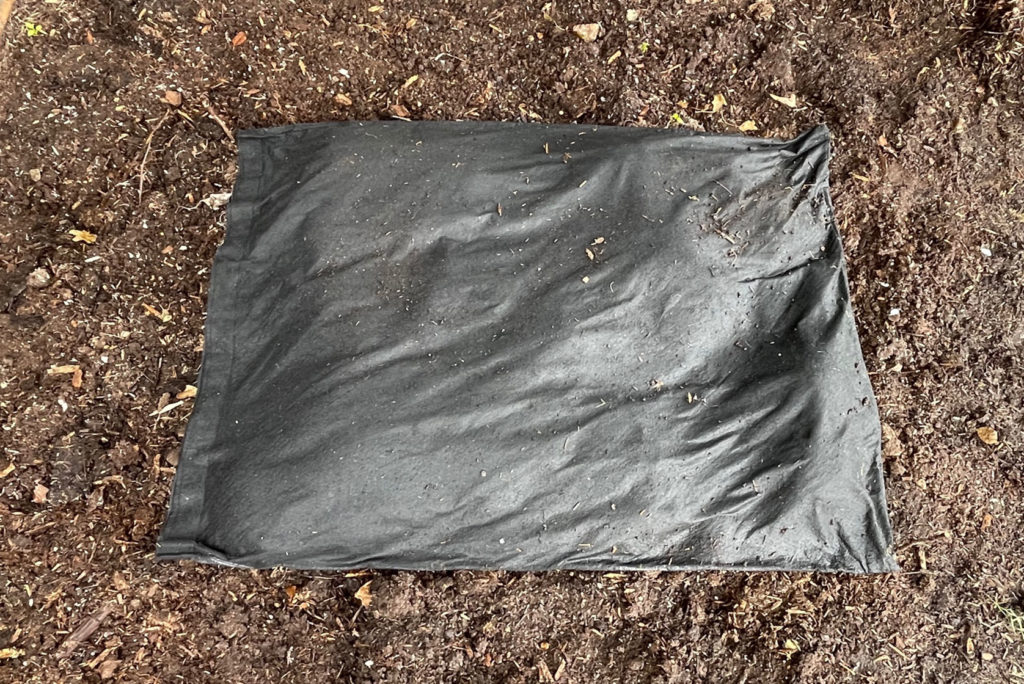
The RAS will be offered in several sizes including 2-foot by 3-foot (0.6 meter by 0.9 meter) for use in foundation trenches, along with 2-foot by 2-foot (0.6 meter by 0.6 meter) to be dropped in holes for foundation piers, and larger sizes if needs are identified. The bag can be applied in minutes to vulnerable areas of exposed dirt before the rain begins (Figure 2). As the rain falls, it is almost instantly absorbed by the polymer granules as the rainwater enters the bags (Figure 3).
The application bags are designed to handle rainfall at multiple levels — even hurricane levels — because the waterproof bottom material traps the excessive moisture inside the bag until it is absorbed. After the rain stops, the bags with the wet granules can be moved quickly, and work can be initiated again within a few minutes after the last storm ends. If the storm passes with little to no precipitation, the RAS application bags can be picked up and stored away for another day, minimizing the time lost setting up and breaking down the RAS.
Since reusing the bags will be based upon their moisture content prior to the next rainfall event, there are two options to deal with the wet granules after the storm has passed that allow contractors to choose the approach that works best for the project timeline:
They can be dried on the jobsite in one to three hours using a simple fan to blow air inside the bag that opens up completely using a hook and loop aperture on one end (Figure 4). Exact time to dry is dependent on weather conditions, especially humidity. Testing did show that no more than three hours is needed in any condition.
The wet granules can be removed immediately after use and saved, with new granules poured in the old application bag making it immediately ready for the next storm. This saves the builder the time required to dry wet granules.
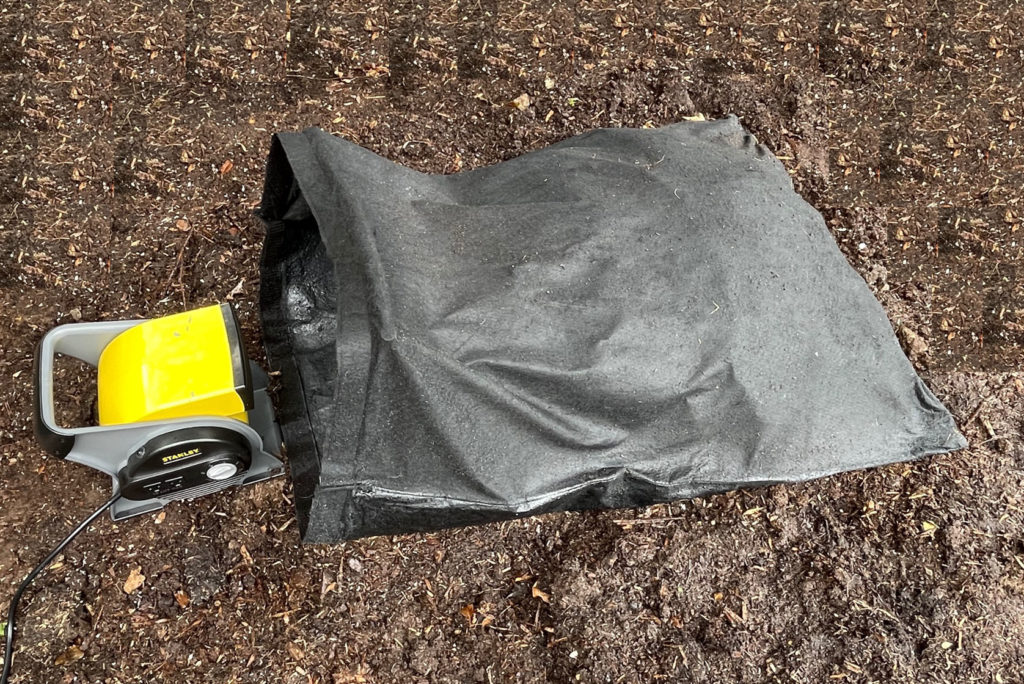
When storing the wet SAP granules onsite the contractor needs to make sure that more water cannot reach the granules or that they cannot wash away. One option is to dump all the granules on a tarp and fold it over a few times securing the edges down with bricks or rocks. This method also allows the contractor to dry them using the sun. When the sun is shining, unfold the tarp and let Mother Nature do all the work. The financial investment in the granules and RAS as well as the need to have the product available to protect the jobsite are incentives for contractors to manage the storage, drying and use of the RAS appropriately.
The cost savings of reducing downtime with the RAS scale with the number and scope of projects undertaken by a construction company. While larger projects may realize larger savings, small contractors can also benefit because the RAS translates into fewer lost workdays.
For example, if a masonry contractor who usually makes $500 per day used RAS for 48 storms in a year and saved 96 days based on two days per storm that they lost without the use of RAS, this would translate to an additional $48,000 in annual revenue.
Anticipating problems is a key part of planning any construction project, and RAS is the first erosion control product that addresses the challenge of mud on a construction jobsite by solving the problem before it becomes a problem.
More Information
More product information can be found at www.RainWaterAbsorbingSystem.com. The system was recently profiled on the CBS The Henry Ford’s Innovation Nation Show and can be viewed on YouTube at: https://www.youtube.com/watch?v=yo14j84gcAE.
Reference:
de Paor, R. Wind, rain, temperature and construction contracts: How to provide for climate change in your engineering and construction project. 2021, April 27. JD Supra. Retrieved September 27, 2022, from https://www.jdsupra.com/legalnews/wind-rain-temperature-and-construction-9918027/
About the Expert
Locke White is an inventor in Blacksburg, Virginia. Over the years, he has worked with Procter & Gamble, Unilever, Toro, Hasbro, Nike, Staples and others on a variety of new product concepts.




